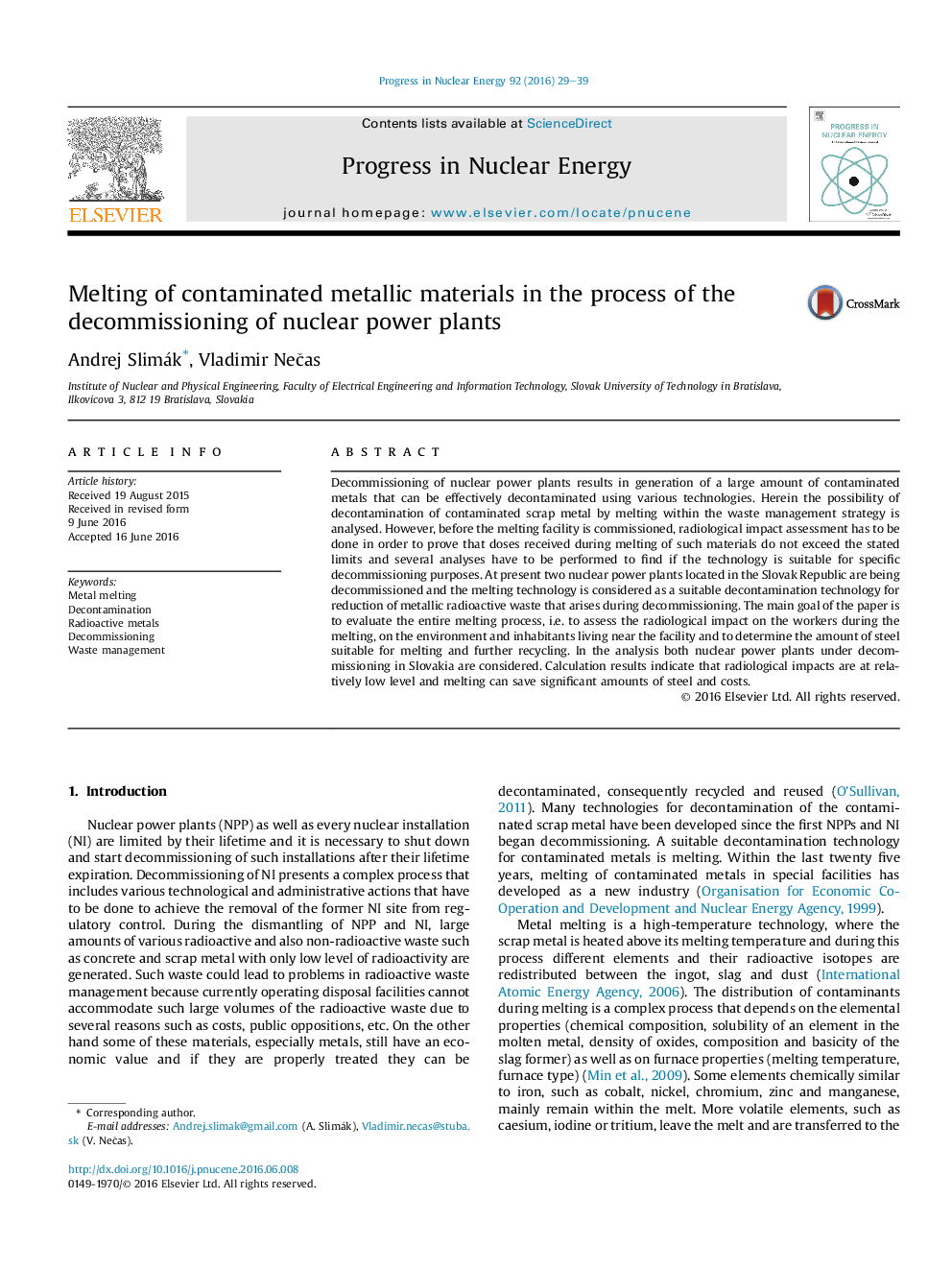| Article ID | Journal | Published Year | Pages | File Type |
|---|---|---|---|---|
| 1740268 | Progress in Nuclear Energy | 2016 | 11 Pages |
•Calculation of the radiation impacts of the melting on the professionals, environment and public.•Estimation of the amount of contaminated metals suitable for melting.•Estimation of the amount of the secondary radioactive waste.•Preliminary cost/benefit analysis.•Proposal of acceptance limits for melting unit.
Decommissioning of nuclear power plants results in generation of a large amount of contaminated metals that can be effectively decontaminated using various technologies. Herein the possibility of decontamination of contaminated scrap metal by melting within the waste management strategy is analysed. However, before the melting facility is commissioned, radiological impact assessment has to be done in order to prove that doses received during melting of such materials do not exceed the stated limits and several analyses have to be performed to find if the technology is suitable for specific decommissioning purposes. At present two nuclear power plants located in the Slovak Republic are being decommissioned and the melting technology is considered as a suitable decontamination technology for reduction of metallic radioactive waste that arises during decommissioning. The main goal of the paper is to evaluate the entire melting process, i.e. to assess the radiological impact on the workers during the melting, on the environment and inhabitants living near the facility and to determine the amount of steel suitable for melting and further recycling. In the analysis both nuclear power plants under decommissioning in Slovakia are considered. Calculation results indicate that radiological impacts are at relatively low level and melting can save significant amounts of steel and costs.
